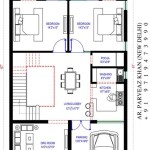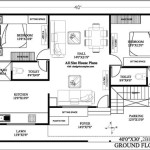Essential Aspects of Project Management Plan Home Construction
Building a home is a major undertaking, and it's essential to have a solid project management plan in place to ensure the project is completed on time, within budget, and to your satisfaction. A well-crafted project management plan will outline the key steps involved in the construction process, assign responsibilities to team members, and establish a timeline for completion. By following these essential aspects of project management, you can increase the chances of a successful home construction project.
1. Define the Scope of Work
The first step in creating a project management plan is to define the scope of work. This includes identifying the specific tasks that need to be completed, as well as the materials and resources that will be required. The scope of work should be as detailed as possible to avoid any misunderstandings or changes later on in the project.
2. Set a Realistic Budget
Once you have defined the scope of work, you need to set a realistic budget for the project. This includes estimating the cost of materials, labor, and any other expenses that may be incurred. It's important to be conservative with your budget, as unexpected costs can always arise.
3. Create a Timeline for Completion
Next, you need to create a timeline for completion. This timeline should include the start date, end date, and key milestones for the project. It's important to be realistic with your timeline, as delays can always occur. However, having a timeline in place will help you stay on track and avoid any major setbacks.
4. Assign Responsibilities to Team Members
Once you have set a timeline for completion, you need to assign responsibilities to team members. This includes identifying who will be responsible for each task, as well as the deadlines for each task. It's important to communicate these responsibilities clearly to avoid any confusion or overlap.
5. Monitor Progress Regularly
Finally, you need to monitor the progress of the project regularly. This includes tracking the progress of each task, as well as the overall budget and timeline. By monitoring progress regularly, you can identify any potential problems early on and take corrective action.
By following these essential aspects of project management, you can increase the chances of a successful home construction project. Having a solid plan in place will help you stay organized, avoid costly mistakes, and ensure that your project is completed on time, within budget, and to your satisfaction.

Construction Project Plan Template Spreadsheet Templates

A Sample Microsoft Project Construction Schedule B4ubuild Com

Project Management For Construction Planning

Construction Schedule Template Free Excel Csv

A Sample Microsoft Project Construction Schedule B4ubuild Com

Construction Schedule Template

Construction Free Spreadsheet Templates

Project Management For Construction Planning

Templates Project Plan 365

Home Renovation Project Plan Template Luxury A Sample Microsoft Cons House Projects Management Templates








